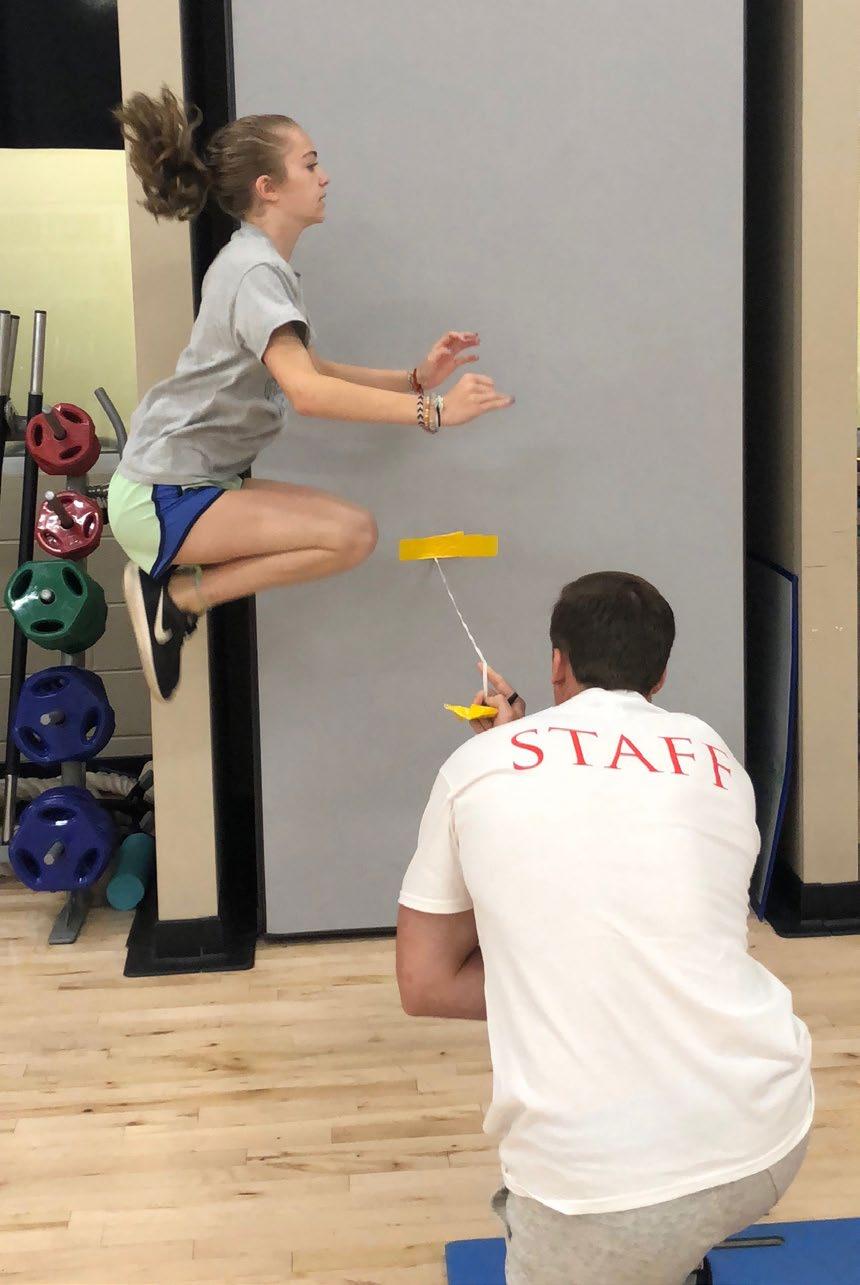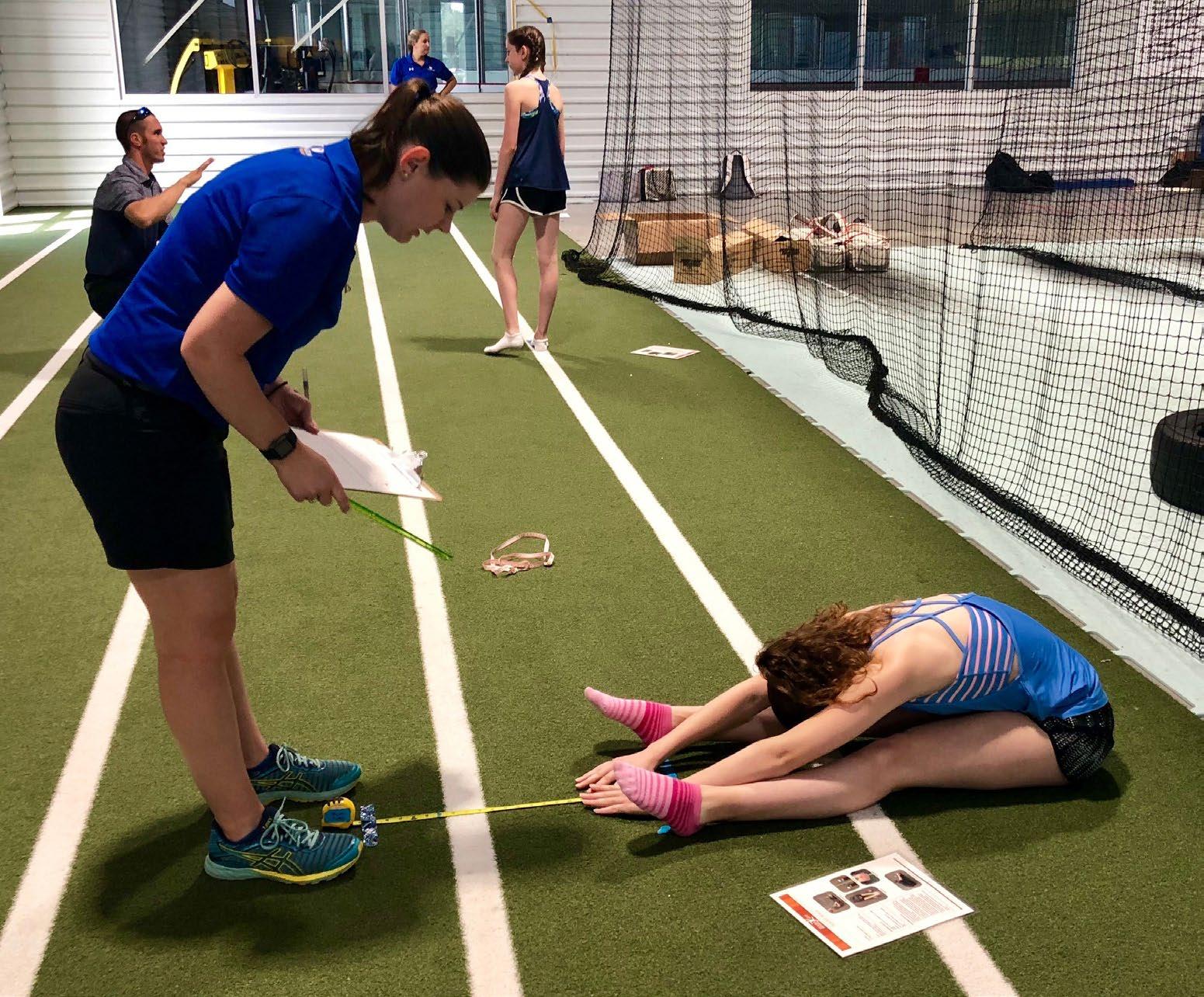
5 minute read
Can You Take A Peek?
By Kent McDill | PHOTOS COURTESY OF U.S. FIGURE SKATING
Charlene Durham believes all skating rinks and coaches should have a professional relationship with a physical therapist just so there is someone nearby who can “take a peek’’ when an athlete expresses a pain or discomfort.
Advertisement
Of course she is going to say that; she is a physical therapist. But her motivation is to prevent pains from happening in the first place and addressing those pains early before they become anguishes.
Durham is a physical therapist and figure skating coach working at the Carolina Ice Palace in North Charleston, S.C. She has a master’s degree in physical therapy from The Medical University of South Carolina, and after years of specializing in pediatric physical therapy, she is now converting her knowledge to teaching.
But Durham is also working as an athlete assessor for the U.S. Figure Skating athlete testing programs S.T.A.R.S and the Athlete Movement Screening program. A former competiitve figure skater who grew up in Canada, she has combined her athletic experience with her educational experience to serve dual purposes for her athletes.

Her desire to teach comes from her experience working with figure skating coaches who must deal with the aches and pains of children athletes. She understands the limitations some coaches have in knowing how to address all injuries, and that’s why she promotes the idea that rinks can connect coaches with an affiliated local professional for that “peek”.
“Figure out who your go-to specialist is,” Durham said. “Some training centers might have an athlete trainer, but coaches need to be aware if there is a complaint that persists, they have that person they can go to and say, ‘can you take a peek’?”
A physical therapist can also educate the athlete and the athlete’s parents, especially when treatment runs counter to the goals of the athlete. This is especially true when the treatment required includes rest. Telling a figure skater to stay off the ice is like telling them to stop breathing.
“You have to be able to explain to the kids why they are doing what they are doing and how it is going to benefit them,” she said. “You tell them if you don’t take the next five days off, this is what is going to happen to you.
“The communication is also needed with parents and coaches so that they are on board, so that the PT is not saying one thing and the coaches are saying ‘they are fine, just go skate’.”
Durham’s work as a pediatric physical therapist addresses the pains which child athletes experience, but her work with the S.T.A.R.S program created by U.S. Figure Skating is an effort to prevent injuries from happening. The Athlete Movement Screening program provides athletes with a diagnosis of their physical framework in order to provide direction that will prevent the injuries which plague child figure skaters.

“The whole point is you want to participate injury-free,” Durham said. “We look at movement, we look at strengths and weakness, so we can identify the one particular area that is a weakness and address it now before it becomes a problem. It is a great program to prevent injury.”
In pursuing her doctorate in pediatric physical therapy, Durham is researching knee pain in young female skaters, and has discovered in her coaching that the pre-adolescent and adolescent female skaters have constant complaints of anterior knee pain, which is pain on the front of the knee, just below the kneecap. The research she has found shows that such pain is generated from poor development of the muscle groups tied to the hips and the glutes. That research indicates that skaters need to develop muscles that support the legs and knees, and indicates that physical training needs to go beyond what might seem standard operating procedure for skaters, meaning the development of musculature throughout the body.
“We see a lot of knees pushing inward,” she said. “That is going back to the hip muscles and having proper upper body mechanisms. We see muscle tightness, not enough flexibility and poor biomechanics. If you are not strong in the core and hips, the knee won’t support the movement you need to skate.”
Those findings are why Durham points to one exercise demonstrated in the S.T.A.R.S program as a vital one for young skaters to be able to perform.
“The one test that I see in the research that addresses knee pain is the single leg squat,” Durham said. “It is a series of knee bends while standing on one leg, hands on your hips. We watch the tracking and the alignment and find that a majority of young girls cannot bend their knee and squat with the knee aligned straight. Everyone has their knee pointing inward, and we need to figure that out because as they move forward in their training, they are going to experience pain if they can’t keep that knee straight.”
The importance of developing the musculature of the entire body is one of the primary arguments in favor of child athletes participating in more than one sport. Such talk is anathema to some figure skating coaches who believe that attention solely to figure skating is the only way to be successful, and Durham admits it is an argument she has with herself in considering the necessary physical development of young athletes.
“Child athletes are a very specific population, and sports specialization at younger ages is becoming more prevalent,” Durham said. “There is a lot of research that says kids should not specialize so early, that they should have varied physical activities, which is very true. But in figure skating, athletes do need to specialize early in order to excel. It is a short time frame they have in that sport.
“It is a complicated topic, and there are pros and cons to both,” she said. “It is a hard situation for a sport like figure skating. If you have a child that is specializing, and they are doing it year-round, the key is to include other modalities that will help them work the other muscle groups they would be working out when participating in other sports. It is having the right person to work with off-ice. I don’t think sports specialization is a terrible thing; you just have to approach it in a different way.”
Such as having a physical therapist to turn to.




